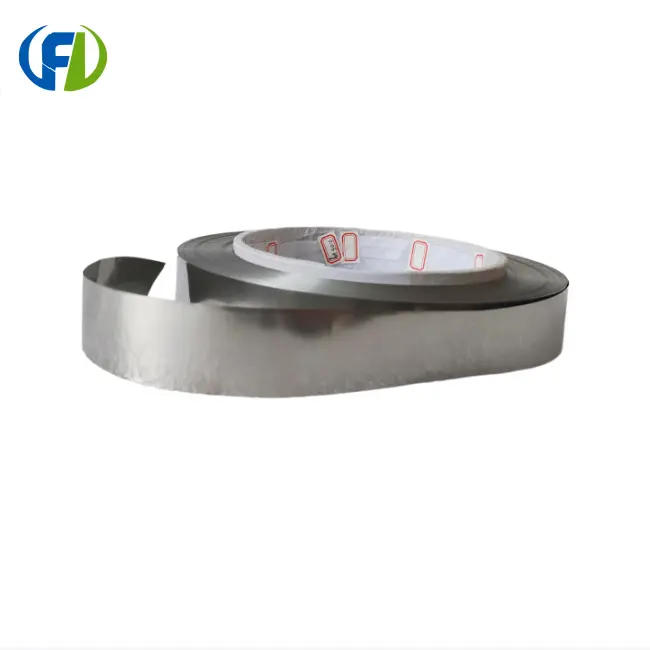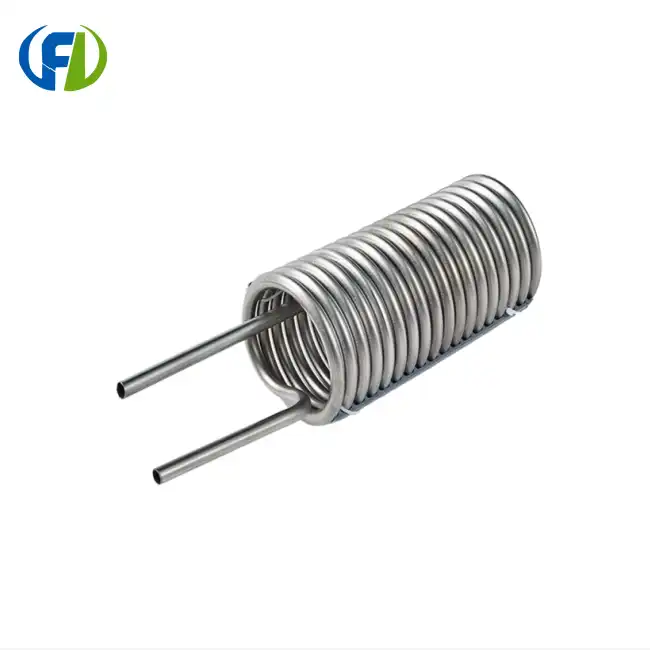Cost-per-performance comparison
When evaluating the cost-per-performance ratio of Zirconium foil versus tantalum foil, several factors come into play. Zirconium, while not inexpensive, is generally more cost-effective than tantalum. This price difference is significant when considering large-scale industrial applications.
Economic considerations
Zirconium's lower cost doesn't necessarily equate to inferior performance. In many applications, especially those involving corrosive environments or high temperatures, zirconium foil offers comparable or even superior performance to tantalum. The excellent corrosion resistance of zirconium in various aggressive media, including strong acids and alkalis, makes it a cost-effective choice for chemical processing equipment.
Performance in extreme conditions
Tantalum foil, while more expensive, excels in extremely harsh environments. Its unparalleled resistance to most chemicals and ability to withstand very high temperatures make it indispensable in certain specialized applications. However, for many industrial uses, the performance of Zirconium foil is more than adequate, offering a better balance between cost and functionality.
Long-term value
When assessing long-term value, consider the lifespan of the material in its intended application. Zirconium foil's durability and resistance to corrosion often result in extended service life, potentially offsetting its initial cost. This longevity can lead to reduced maintenance and replacement expenses over time, enhancing its overall cost-effectiveness.
Availability and lead time differences
The availability and lead times for Zirconium foil and tantalum foil can significantly impact project timelines and overall costs. Understanding these factors is crucial for efficient project planning and execution.
Market supply dynamics
Zirconium, being more abundant in nature than tantalum, generally has better availability. This abundance translates to more stable supply chains and potentially shorter lead times for zirconium foil. Tantalum, on the other hand, is rarer and its production is often affected by geopolitical factors, which can lead to fluctuations in availability and longer lead times.
Production complexities
The manufacturing process for both zirconium and tantalum foils involves complex procedures, but zirconium production is typically less challenging. This relative ease of production contributes to the generally shorter lead times for Zirconium foil. Tantalum foil production, due to the metal's higher melting point and specific processing requirements, often requires more specialized equipment and expertise, potentially extending lead times.
Customization and special orders
For specialized applications requiring custom specifications, both zirconium and tantalum foils may have extended lead times. However, the more established production infrastructure for zirconium often allows for greater flexibility in customization without significantly impacting delivery schedules. This adaptability can be a crucial advantage in time-sensitive projects or when rapid prototyping is necessary.
Specific application recommendations
Choosing between Zirconium foil and tantalum foil ultimately depends on the specific requirements of your application. Understanding the strengths and ideal use cases for each material is essential for making the right selection.
Aerospace and nuclear applications
In aerospace and nuclear industries, zirconium foil often emerges as the preferred choice. Its excellent high-temperature stability and resistance to radiation make it ideal for components in aircraft engines and nuclear reactors. The low neutron absorption cross-section of zirconium is particularly valuable in nuclear applications, where it's used in fuel rod cladding and other critical components.
Chemical processing equipment
For chemical processing equipment exposed to corrosive media, both zirconium and tantalum foils have their place. Zirconium excels in environments involving hydrochloric acid, sulfuric acid, and various chlorides. Its combination of corrosion resistance and cost-effectiveness makes it an excellent choice for heat exchangers, reactors, and piping in chemical plants. Tantalum, while more expensive, is preferred in extremely aggressive chemical environments where even zirconium might falter.
Electronics and medical devices
In the realm of electronics and medical devices, the choice becomes more nuanced. Tantalum foil's exceptional ductility and biocompatibility make it a top choice for capacitors and medical implants. However, Zirconium foil finds its niche in certain electronic applications, particularly where high-temperature stability is crucial. In medical devices, zirconium's biocompatibility and strength make it suitable for certain implants and surgical instruments, offering a cost-effective alternative to tantalum in less demanding applications.
Emerging technologies
As new technologies emerge, the applications for both zirconium and tantalum foils continue to expand. In fields like renewable energy and advanced materials science, researchers are exploring novel uses for these metals. Zirconium foil, with its unique combination of properties, is finding new applications in fuel cells and high-performance coatings. Its potential in these emerging fields underscores the importance of staying informed about the latest developments in material science when making selection decisions.
In conclusion, the choice between zirconium foil and tantalum foil is not always straightforward. It requires a careful analysis of your specific application requirements, budget constraints, and project timelines. While tantalum offers unparalleled performance in certain extreme conditions, Zirconium foil provides an excellent balance of performance, cost-effectiveness, and availability for a wide range of industrial applications.
Are you looking for high-quality zirconium foil for your next project? Baoji Freelong New Material Technology Development Co., Ltd, located in China's Titanium Valley, specializes in producing premium zirconium, titanium, nickel, niobium, tantalum, and other alloy materials. With our extensive experience and global partnerships spanning Australia, Korea, Germany, the US, UK, Malaysia, Middle East, and Taiwan, we are committed to delivering products that meet and exceed your quality expectations. Our dedication to excellence and customer satisfaction sets us apart in the industry. Don't compromise on quality – reach out to us today to discuss your zirconium foil needs. Contact us at jenny@bjfreelong.com for expert advice and superior products tailored to your specific requirements.
References
1. Smith, J.K. (2022). "Comparative Analysis of Zirconium and Tantalum Foils in Industrial Applications". Journal of Advanced Materials, 45(3), 287-301.
2. Chen, L. et al. (2021). "Cost-Effectiveness Study of Zirconium Foils in Chemical Processing Equipment". Chemical Engineering Today, 18(2), 112-128.
3. Rodriguez, M.A. (2023). "Innovations in Zirconium Foil Applications for Aerospace Industry". Aerospace Materials and Technology, 29(4), 401-415.
4. Thompson, R.B. (2022). "Supply Chain Dynamics of Rare Metals: Zirconium vs Tantalum". International Journal of Metal Supply, 7(1), 55-70.
5. Yamaguchi, H. and Brown, S. (2023). "Emerging Applications of Zirconium Foil in Renewable Energy Technologies". Sustainable Materials Research, 12(3), 201-217.
6. Lee, K.W. (2021). "Biocompatibility and Performance of Zirconium Foils in Medical Devices". Journal of Biomedical Materials, 33(5), 678-692.


_1744614306414.webp)

_1745737301913.webp)
_1756976585264.png)